– third part –

Neritina saulcyi Bourguignat, 1852. Found in Attikí, Boeotia, Crete… Named after the orientalist F. de Saulcy, who collected some molluscs « in Greece, Syria, Palestine, and other remote countries during the years 1850 and 1851 » (Bourguignat: Testacea novissima, Paris 1852, p.25). Félicien de Saulcy is the author of a Voyage autour de la Mer Morte et dans les terres bibliques (1850-1851), journey during which he collected the shells that are reported in Bourguignat’s work.
The variant bears a marked radial sculpture, and a dark surface. On rocks in 50cm deep, in the Voulismeni City Lake (brackish water), Agios Nikolaos, Lasithi, N. Crete. 4mm.

« Shell small, semi-globose, entirely black. When one examines this Neritine by transparency, its test seems adorned with a crowd of small transverse black lines, which themselves are sometimes furrowed with other longitudinal lines which intersect at right angles. Its three whorls are convex and grow with an extreme rapidity; so the spire is very small and undeveloped. The suture is very pronounced. » – J. R. Bourguignat: Catalogue raisonné des mollusques terrestres et fluviatiles, Paris 1853, p.71.
Ágios Ioánnis spring, Agio Pnevma, Serres, Central Macedonia, N. Greece. 6mm.


« The aperture is oval, blackish, and has a simple and acute peristome; its operculum, pinkish white, sometimes gives slight orange and blackish shades. This Neritine inhabits the small streams in the vicinity of the Penteli Monastery, near Athens. » – Ibid.
A specimen with some traces of whitish pattern just above the periphery. Same spring. 6,6mm.


A small variant of the variant “saulcyi” is found also inside a double emergence and in the brook that springs from it, at Camou-Cihigue, Pyrénées-Atlantiques, SW. France. Here, a small group pictured between the warm (circa 30°C) and the cold spring (circa 10°C), in the pool of Lamiña Cave, spring of Guechala stream, south of Camou. Sizes around 2-4mm.

This variant of the variant is unevenly ribbed by numerous strong growth-marks, and is smaller than the usual “saulcyi” (which, itself, is somewhat smaller than average fluviatilis). The operculum is typical of fluviatilis and cannot be confused with that of thermalis, the other black fluviatilis.



The warm emergence (behind the stonework) and the cold one (right beside) at Lamiña pool. – Original picture provided by A. Bertrand (FR) – (CC BY-NC-SA).

Specimens of this western “saulcyi” feeding on the organic film at the surface of stalks and leaves of the water-crowfoot Ranunculus fluitans Lamarck, 1799, in the brook at Camou.


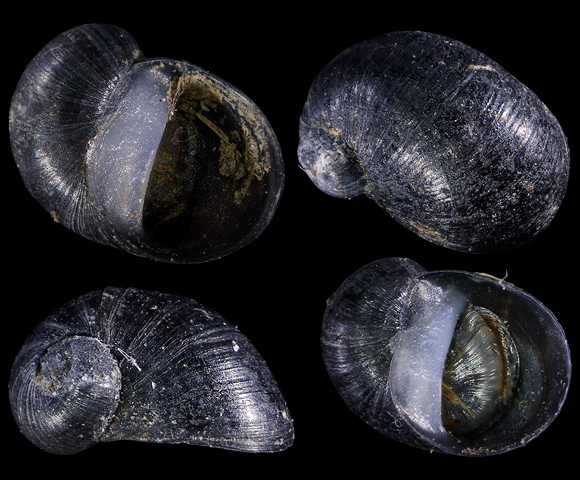
E. Rasmussen (1973), in “Systematics and ecology of the Isefjord marine fauna (Denmark)”, Ophelia Vol. 11, p. 231-232, provides a map with the distribution of T. fluviatilis in brackish and fresh water in the Baltic Sea and the Danish fjords (fig.61). It lives in salinities up to 15-17‰. In these environments the shell has a blackish colour. – Above: some other specimens from the salty brook at Camou, downstream Lamiña springs.

O: outer arched rib; E: extension; C: anterior marginal callus.
The extension of the anterior abutment does not show any digitation (pseudoapophysis).

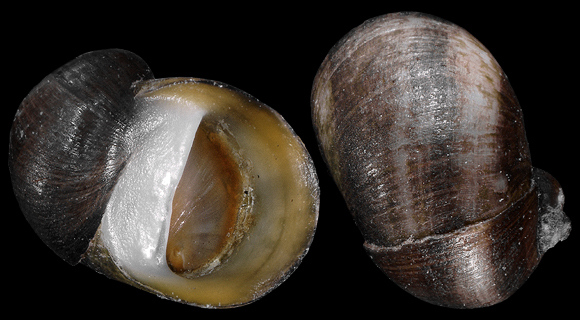

Arménoi springs, south east of Chaniá, W. Crete. 5,3-5,7mm. These shells were erroneously identified as Th. transversalis by collectors in the region (lake Kournas in 1997 and Preveli area in 1994; see Szerkowski, 1998, paragraph 3). But the opercula are totally different.
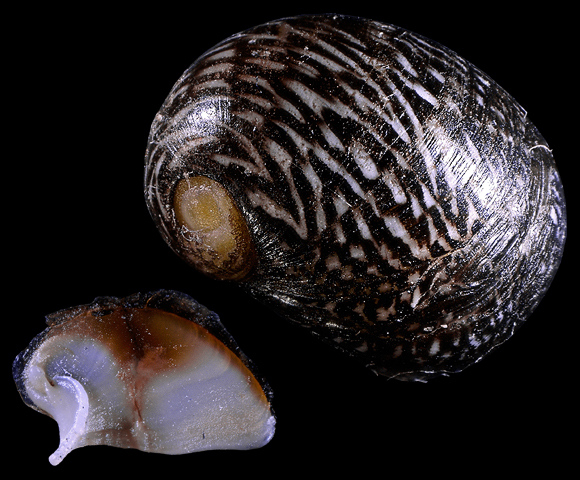
Th. fluviatilis has been registered in the vicinity, in the river Kiliaris that springs in the territory of Stýlos. Voucher 24932.


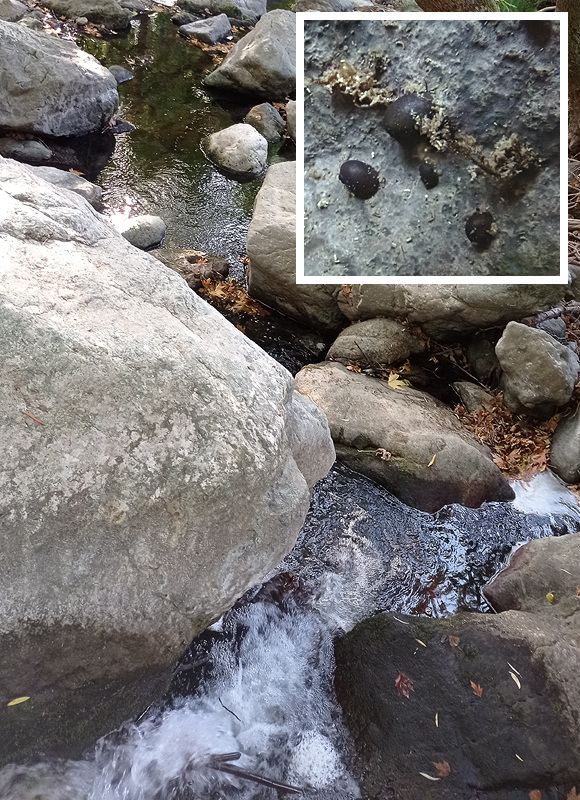




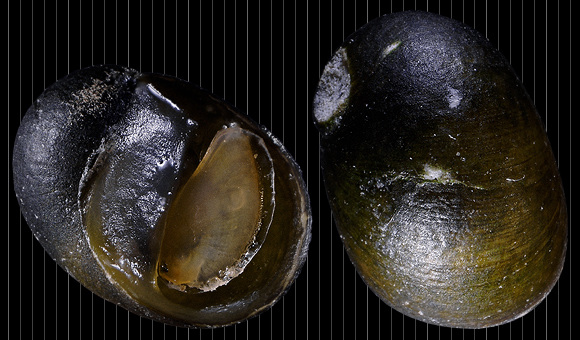

This group is sometimes much less black, rounder, with a thick shell and an orange aperture. Specimen from the northwestern tributary of the Megalopotamos, collected in the pond at the emergence, on top of the waterfall near the chapel of Agios Nikoláos, Kourtialotiko gorge, south of Réthymno, central Crete. 5mm.
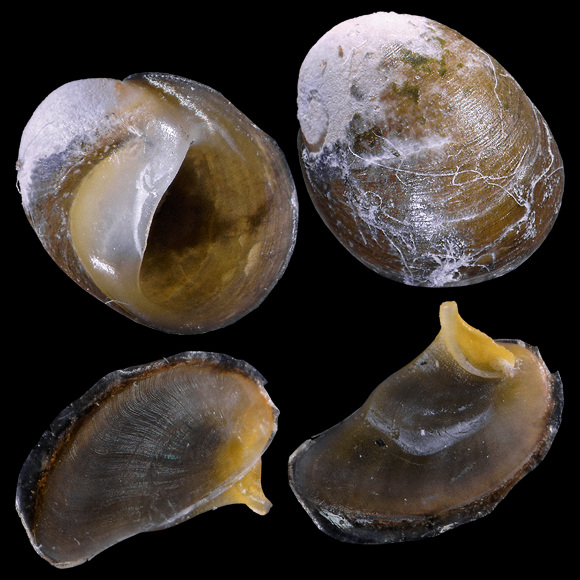
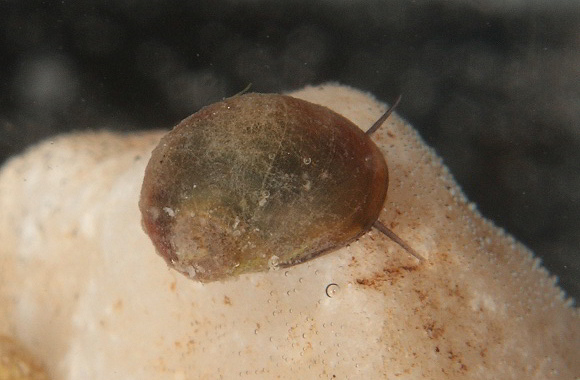


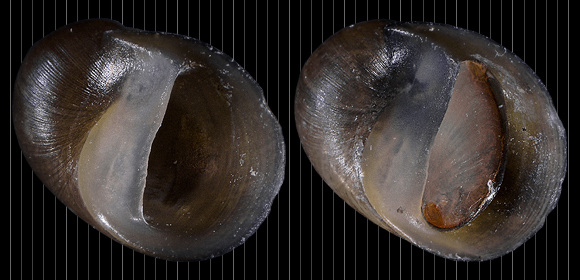

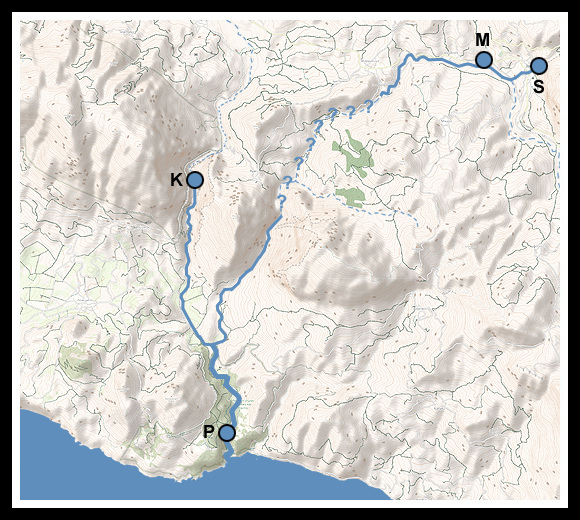
Left tributary: the river that escapes out of Kourtaliotiko gorge. K: the pond on top of the waterfall. Right tributary: Spíli river. S: the Lions’s Fountain of Spíli. M: Maravel Garden. P: Preveli lake and palm forest. The megalopotamos begins at the confluence of the two tributaries.
